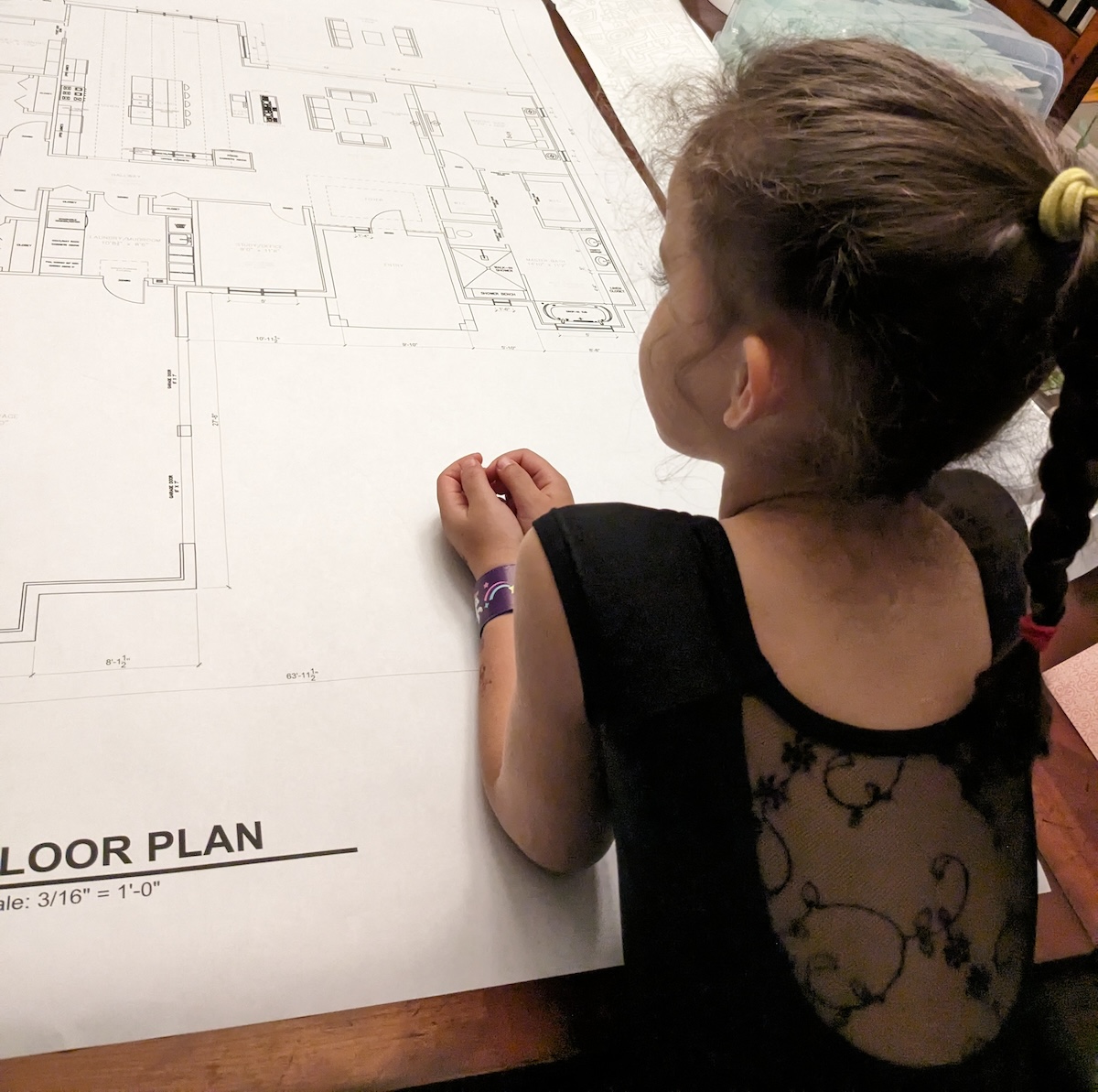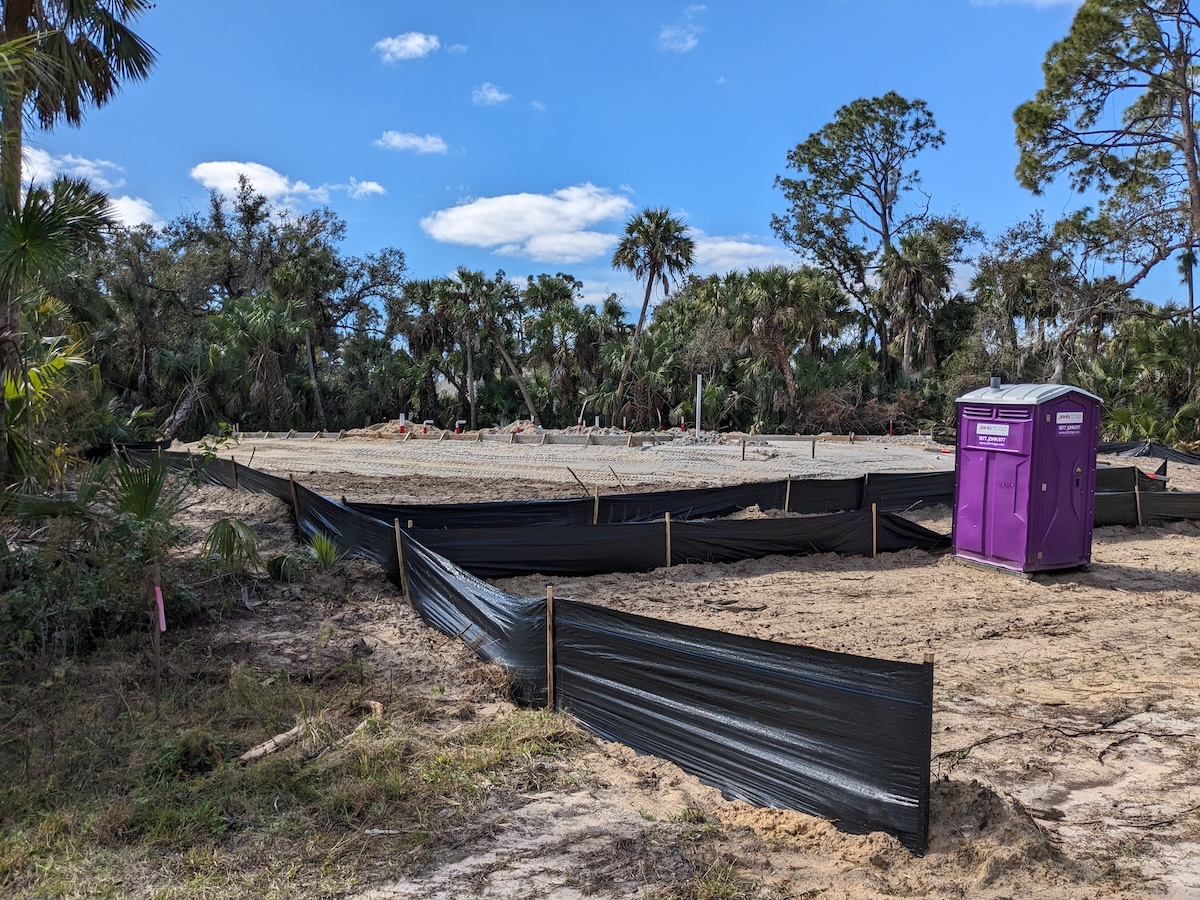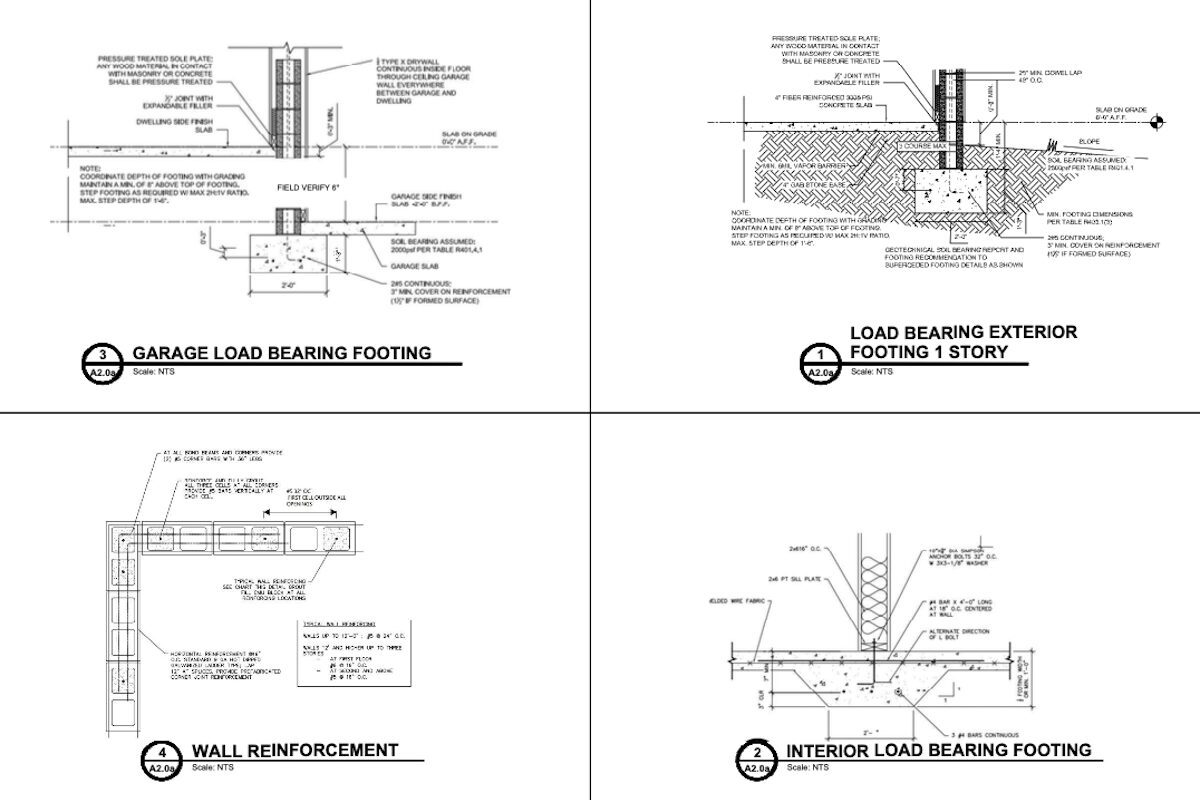First in our monthly home construction series—October 2024
Hello, financial freedom lovers! If you’re new here, I’m José, and along with Tatiana, I write about our FIRE journey. Today marks the beginning of an exciting new chapter in our story—one that I hope will inspire, inform, and maybe even save you some money along the way.
Every first Wednesday of the month, we’ll be documenting our adventure of building our dream home from the ground up. But this isn’t just another home construction blog. As FIRE enthusiasts who achieved early retirement through careful planning and investment, we’re approaching this build with the same analytical mindset that helped us reach financial independence. We’ll share every cost, decision, and lesson learned—no sugarcoating, just real numbers and practical insights that you can use in your own journey.
Whether you’re actively planning to build, just dreaming about it, or simply curious about how a FIRE family approaches a major construction project, there’s something here for you. We’ll explore everything from value engineering to long-term cost considerations, and yes, even our mistakes (spoiler alert: we’ve already made a few!).
How It All Began
When an opportunity to purchase 5.5 acres of land appeared at a county auction just a five-minute walk from our current home in Sarasota County, Florida, we knew it was special. As FIRE enthusiasts who achieved early retirement through careful planning, we’ve learned to recognize good investments when we see them. While we weren’t actively looking to move—we were quite content in our current house—we’d always dreamed of having more land.

Why We Decided to Build
The decision to build wasn’t just about wanting a new home. The opportunity to purchase over five acres in an established neighborhood is increasingly rare, and the location couldn’t be better—it’s just a five-minute walk from our current house. This proximity is proving invaluable, as we can easily supervise construction progress while maintaining our daily family routines.
From an investment perspective, our decision aligned perfectly with both our financial goals and lifestyle needs:
- We’re preventing developers from turning these five acres into a cookie-cutter subdivision, preserving the neighborhood’s natural beauty
- The owner-builder approach allows us to prioritize high-quality materials and sustainable features that will reduce long-term costs
- Living nearby during construction lets us thoughtfully create the homestead we’ve envisioned, complete with future plans for fruit trees and gardens
- We’re building wealth through equity, thereby increasing our net worth
Our Owner-Builder Approach
A key aspect of our project is that we’re acting as our own general contractors rather than hiring a builder. This owner-builder approach is central to our strategy and worth explaining because it significantly impacts both our costs and control over the project.
By managing the construction ourselves instead of hiring a builder, we’re looking at saving approximately 15-25% on the total cost of the house. For perspective, on a $500,000 build, this could mean savings of $75,000 to $125,000! But the benefits go beyond just cost savings:
- Complete creative control over our truly custom home design
- Ability to avoid the limitations of cookie-cutter production homes
- Freedom to select and manage our own subcontractors
- Flexibility to make upgrades where they matter most
- Option to build a stronger foundation than what production builders typically provide
- Direct oversight of materials and construction quality
Of course, this approach requires more time investment and hands-on management from us. But as early retirees with flexibility in our schedules, we’re well-positioned to take on this role. It also aligns perfectly with our FIRE principles of optimizing value while maintaining quality.
Project Statistics Dashboard
Let’s talk real numbers, because transparency in costs is crucial for anyone considering a similar journey.
Land Investment Analysis
We purchased the land for $169,297, which works out to $30,781 per acre. For comparison purposes, since most local homes are built on quarter-acre lots, our equivalent cost would be $7,695 per quarter-acre—significantly below the area average of $23,000. This value proposition was one of many factors that convinced us this was the right move.
Current Project Costs
Here’s where our money has gone so far (through October 2024):
| Current Project Costs (as of October 2024) | |
|---|---|
| Architectural Fees | $4,450 |
| Professional Fees Includes surveys, soil testing, and engineering analysis | $5,136 |
| Design-Related Deliverables | $229 |
| Site Preparation | $2,352 |
| Permit Fees | $1,038 |
| Utility Fees Includes water meter connection and water line extension | $11,043 |
| Construction Equipment | $748 |
| Administrative Costs | $305 |
| Framing (Truss Manufacturing) | $5,063 |
| Total Investment to Date | $30,364 |
Project Note: The site preparation cost covered brush mowing to visualize the house placement through the forest and gopher tortoise surveys. We have at least two gopher tortoises, but they’re far from the construction site and their burrows won’t need to be relocated.
Timeline Note: We placed an initial deposit on the trusses in December 2023. While we initially hoped to start building in spring 2024, we decided to postpone until fall to avoid hurricane season.
The Design Process: Making Smart Choices
Here’s a story that’ll make you smile—when we started looking for architects in summer 2023, we received quotes ranging up to $30,000 based on square footage alone. One architect tried to justify this by saying they’d save us money by not “over-engineering” the house. My response? I’d rather put that money into actual over-engineering than into someone’s pocket!
During our search, we received quotes from four different firms. One luxury coastal firm was upfront about their $20,000 fee but recommended we seek a smaller firm since our project wasn’t overly complex. This candid feedback proved valuable in our search.
This mindset led us to a smaller, highly respected firm that took a more practical approach. Instead of charging by square footage, they based their fees on service level. The result? An initial fee of $4,000 for design and permitting revisions. Even if we need their help for 10 hours every month during construction (at $195 per hour), we’re still looking at significant savings. Being early retirees means we have the time to be more hands-on with the process, which leads to substantial cost savings.
We made several key decisions early on:
- Choosing a single-story design for aging in place
- Creating spaces that work for homeschooling our two young children
- Planning for future additions and modifications
- Incorporating features that will reduce long-term maintenance and utility costs

Timeline Reality Check
Let me give you a realistic picture of our timeline. The design process typically takes about three months—though we intentionally extended ours since we weren’t in a rush. But getting the design finalized is just the beginning of the journey.
Once you have a design you’re happy with, the next crucial phase begins: gathering preliminary quotes for the major components:
- Windows and doors
- Foundation work
- Site clearing
- Block and wood framing
- Trusses
- Roofing
- Electrical
- Plumbing
- HVAC
This phase can be surprisingly time-consuming. In our case, we had a solid design by the end of November, but with the holiday season approaching, contractor response times slowed considerably.
The most challenging part? Finding a contractor to build the shell—the foundation, walls, and roof that form the basic structure of the house. Not only is this the most expensive part of the build, but it requires extensive due diligence. Many companies either didn’t respond to our quote requests or weren’t a good fit for our owner-builder approach. While there aren’t many contractors willing to build just the shell and let you manage the rest of the project, they do exist—you just need patience to find them.
Timeline Tip: If you’re planning to build, add at least 2-3 months for the contractor selection process. Between waiting for quotes, checking references, and negotiating terms, this phase often takes longer than expected.
The Value of Contractor Feedback
Here’s where things get interesting—and potentially money-saving. The quoting process often leads to valuable design refinements. For instance, we adjusted several window sizes to align with standard dimensions, significantly reducing costs. But the real win came from our shell contractor’s expertise: they suggested modifications to the block framing and stem wall foundation that will save us approximately $30,000!
Remember earlier when I mentioned the architect who wanted to charge us $30,000 to avoid “over-engineering”? Well, we ended up getting the best of both worlds: a thoughtfully designed home from a reputable architect at a reasonable price, plus valuable engineering optimizations from our experienced contractor. This perfectly illustrates why having multiple perspectives on your project can lead to substantial savings without compromising quality.

Lessons Learned
Pro Tip: Never assume anything stays the same in the permitting process—things can change by the day!
Due to a brief change in the city’s permitting process, we lost about 3 months of progress. We’re building a septic tank, which requires the county’s health department approval. When they were behind schedule, the city allowed builders to submit permit paperwork without the septic tank approval. Well, that changed, and I should’ve double-checked! We had the septic tank layout early on because the same contractor also creates the site plan and could’ve turned this in earlier.
Fortunately, the city is not dragging their feet, and we might break ground this year, after all!
Pro Tip #2: Get multiple quotes—way more than you think you need! This tip alone has saved us thousands of dollars.
Let me share a perfect example: when we needed a geotechnical report—a document that assesses a site’s subsurface conditions to determine if it’s suitable for construction—we received three quotes that were wildly different: $1,700, $3,500, and $4,500! The fascinating part? The lowest quote actually offered the perfect trifecta—good price, quality work, and speedy service. We hit the jackpot with all three constraints!
This experience taught us to never settle for just “three quotes” when we’re unsure about the going rate for a service. If it means potentially saving thousands of dollars, I’ll happily get five or more quotes. This strategy has consistently paid off throughout our building journey, especially for specialized services where pricing can vary dramatically.
Pro Tip #3: Always ask for architect’s references—they’re worth their weight in gold!
Here’s something we discovered by accident: checking architect references isn’t just about verifying their professional capabilities (though that’s important too). It’s an incredible networking opportunity! While some reference calls were brief, others turned into hour-long conversations with experienced owner-builders who were happy to share their journey.
These conversations yielded invaluable insights about:
- Money-saving strategies we hadn’t considered
- Common pitfalls to avoid
- Ways to speed up the building process
- Local suppliers and contractors to consider (or avoid)
- Creative solutions to common challenges
Think of it this way: every reference call is potentially connecting you with someone who’s already navigated the path you’re about to take. Some people might give brief responses, but you’ll occasionally strike gold with someone who loves sharing their experience and becomes an invaluable resource for your project.
Where We Stand Now
We’ve just submitted our building permits (October 25th) and are expecting faster-than-usual approval, possibly within two weeks instead of the standard six. This puts us in an excellent position to begin the next phases of our journey:
- Site preparation and clearing
- Underground utility work
- Foundation preparation
- Framing
The upcoming months will involve what I like to call the “invisible investments”—those crucial elements like underground plumbing, electrical, and HVAC that you’ll never see but form the backbone of a quality home.

Looking Ahead
Each month, we’ll share:
- Detailed cost breakdowns and comparisons
- Decision-making processes and lessons learned
- Value engineering examples that could save you money
- Construction progress and challenges
- Tips for managing the building process
We’re especially excited to document how our FIRE principles influence our building decisions, from material choices to long-term maintenance considerations.
Are you considering building a custom home, or have you been through the process? We’d love to hear your experiences and questions in the comments below. Subscribe to our newsletter for weekly updates and exclusive insights into our building journey.
Next month: Breaking ground and site preparation—The real costs and considerations of getting started





